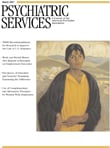Should women with mood and anxiety disorders be treated with medication while they are pregnant or postpartum? Are nonpharmacologic interventions viable alternatives to medications during pregnancy or lactation? These crucial questions have no simple answers, yet patients frequently need evidence-based information about the course and treatment of psychiatric illness during pregnancy, the postpartum period, and lactation. Clinicians who provide care and advice to these women also need evidence-based information in order to weigh the risks and benefits of treatment and the risks of deferring treatment. Mood and Anxiety Disorders During Pregnancy and Postpartum offers clinicians practical, evidence-based information and guidelines for caring for their patients.
Edited by Lee Cohen and Ruta Nonacs, this book covers critical areas in the clinical care of women during pregnancy and the postpartum period. Its primary objective is to help the clinician collaborate with patients who have experienced or are currently experiencing psychiatric illness but who wish to conceive, who are pregnant, or who are in the postpartum period and plan to breastfeed.
The first chapter is an excellent review of the course of psychiatric illness during pregnancy and the postpartum period. It covers depression, bipolar disorder, anxiety disorders, and psychotic disorders. It emphasizes the risks of discontinuation of treatment and the risks of untreated illness for the mother and the neonate. The chapter substantiates the authors' contention that pregnancy is not "protective" with regard to risk for new onset or relapse of a psychiatric illness.
Subsequent chapters address the diagnosis and treatment of mood and anxiety disorders in pregnancy and postpartum. Nonacs' chapter on postpartum mood disorders is especially informative, with clear explanations of data about the detrimental effects of maternal depression on child development and well-being. This chapter also highlights the importance of health care professionals' awareness of postpartum depression, screening, early identification, appropriate treatment, and the fact that postpartum depression is not recognized frequently enough.
Another highlight of the book is a comprehensive, carefully researched section on psychopharmacologic treatment. The discussion of risks and benefits of pharmacologic treatment for pregnant psychiatric patients is very well written and meets the authors' central objective of helping clinician readers to be able to weigh the risks and benefits of medications. The authors point out that decisions regarding the use of psychotropic medications during pregnancy are ideally made before conception, and they discuss clinical approaches for doing so. The role of nonpharmacologic interventions is also rightfully highlighted. A subsequent chapter reviews the use of antidepressants and mood-stabilizing agents during breastfeeding, including a comprehensive summary of relevant published data. The authors correctly explain the limitations of standard sources of information about psychotropic medications during lactation, such as the Physician's Desk Reference and the American Academy of Pediatrics' periodically issued statements on the transfer of drugs into human breast milk.
Bipolar disorder is arguably the psychiatric disorder that poses the most vexing treatment dilemmas during pregnancy and postpartum. The book's section on in-depth management of bipolar disorder during pregnancy and the postpartum period is especially helpful in addressing these clinical challenges.
One caveat about this book, with which the authors would concur, is that knowledge about perinatal psychiatric disorders and treatment is rapidly evolving. As with any book on this topic, new information about the effects of psychotropic medications in pregnancy and lactation has been published since the book went to press.
Overall, the book is easy to read and has a wealth of information on a very important topic. It offers practical clinical guidelines and is an outstanding and valuable read for all mental health professionals involved in the care of women of child-bearing age.

